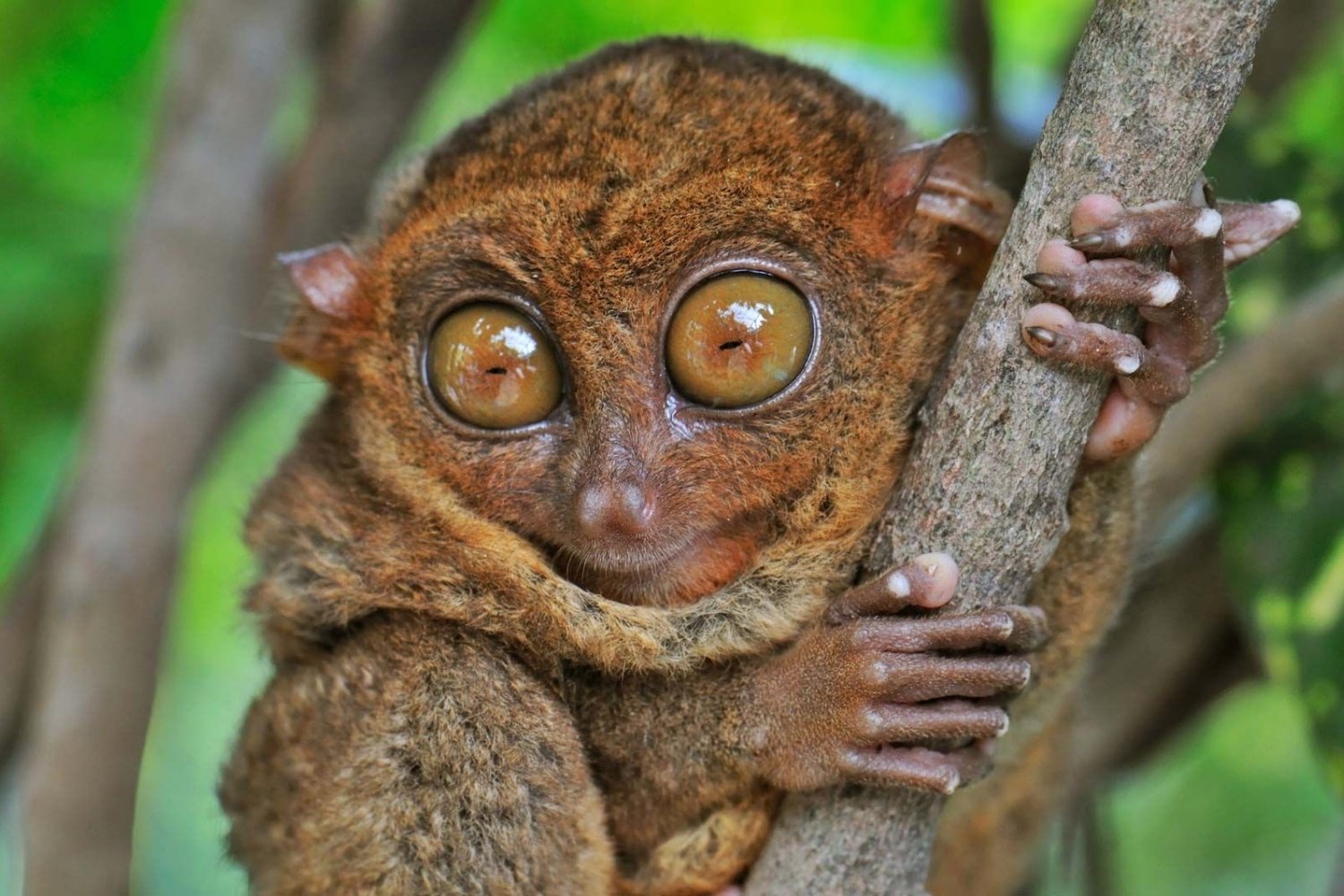
What is a tarsier? These tiny primates, often mistaken for lemurs or monkeys, are unique creatures found in Southeast Asia. With their enormous eyes, tarsiers are nocturnal hunters, leaping from tree to tree in search of insects. Their eyes are so large that they can't move them in their sockets, so they turn their heads almost 180 degrees to see around. Tarsiers have long fingers and toes, perfect for gripping branches. Despite their small size, they can jump up to 16 feet in a single leap! These fascinating animals are also known for their distinctive calls, which can be heard echoing through the forests at night.
What is a Tarsier?
Tarsiers are small primates known for their enormous eyes and unique behaviors. These fascinating creatures have captivated scientists and nature enthusiasts alike. Let's dive into some intriguing facts about these tiny primates.
- Tarsiers are among the smallest primates, with some species measuring only 3.6 inches in height.
- Their eyes are so large that each eye is heavier than their brain.
- Tarsiers are nocturnal, meaning they are most active during the night.
- They have a unique ability to rotate their heads 180 degrees, similar to owls.
- Tarsiers are found primarily in Southeast Asia, including the Philippines, Borneo, and Sumatra.
Physical Characteristics of Tarsiers
Tarsiers possess several distinctive physical traits that set them apart from other primates. These features not only make them unique but also help them survive in their natural habitats.
- Their long fingers and toes are equipped with pads that help them grip branches securely.
- Tarsiers have elongated tarsal bones in their feet, which is where they get their name.
- Their fur is soft and ranges in color from gray to brown.
- They have a long, almost hairless tail that helps with balance.
- Tarsiers have sharp teeth designed for their carnivorous diet.
Tarsiers' Diet and Hunting Habits
Unlike many other primates, tarsiers are strictly carnivorous. Their diet and hunting techniques are fascinating and highly specialized.
- Tarsiers primarily eat insects, but they also hunt small birds, bats, and reptiles.
- They use their acute sense of hearing to locate prey in the dark.
- Tarsiers can leap up to 16 feet to catch their prey.
- They are known to eat their prey whole, including bones and feathers.
- Tarsiers have a high metabolic rate, requiring them to eat frequently.
Tarsiers' Social Behavior
Tarsiers exhibit interesting social behaviors that vary between species. Understanding these behaviors provides insight into their complex lives.
- Some tarsier species are solitary, while others live in small family groups.
- They communicate using a series of high-pitched calls and ultrasonic sounds.
- Tarsiers mark their territory with scent glands located on their stomachs.
- They are known to groom each other as a form of social bonding.
- Tarsier mothers carry their infants in their mouths or on their backs.
Tarsiers' Reproduction and Lifespan
The reproductive habits and lifespan of tarsiers are crucial aspects of their biology. These factors influence their population dynamics and conservation status.
- Female tarsiers typically give birth to a single offspring after a gestation period of about six months.
- Newborn tarsiers are born with fur and open eyes, ready to cling to their mothers.
- Tarsier infants are relatively large, weighing about one-third of the mother's weight at birth.
- They reach sexual maturity at around two years of age.
- In the wild, tarsiers can live up to 12 years, though their lifespan is often shorter due to predation and habitat loss.
Conservation Status of Tarsiers
Tarsiers face numerous threats in the wild, making conservation efforts essential for their survival. Understanding these challenges is key to protecting these unique primates.
- Habitat destruction due to logging and agricultural expansion is a significant threat to tarsiers.
- Some tarsier species are listed as endangered or vulnerable by the International Union for Conservation of Nature (IUCN).
- Illegal pet trade also poses a threat to tarsier populations.
- Conservation programs focus on habitat preservation and anti-poaching measures.
- Ecotourism initiatives help raise awareness and funds for tarsier conservation.
Fun and Lesser-Known Facts About Tarsiers
Beyond their biology and conservation, tarsiers have some fun and lesser-known facts that make them even more fascinating.
- Tarsiers are sometimes called "gremlins" due to their appearance.
- They have a third eyelid, called a nictitating membrane, which helps protect their eyes.
- Tarsiers have been around for at least 45 million years, making them one of the oldest primate groups.
- They can make facial expressions that resemble human smiles and frowns.
- Tarsiers have a unique grooming claw on their second and third toes, used for personal hygiene.
The Final Word on Tarsiers
Tarsiers are fascinating creatures with their enormous eyes, incredible leaping abilities, and unique vocalizations. These tiny primates, found in Southeast Asia, have captivated scientists and nature enthusiasts alike. Their nocturnal lifestyle and specialized diet of insects and small animals make them stand out in the animal kingdom. Despite their small size, tarsiers play a significant role in their ecosystems by controlling insect populations. However, they face threats from habitat loss and human activities, making conservation efforts crucial for their survival. Understanding and appreciating these remarkable animals can help ensure they continue to thrive in the wild. So next time you think about primates, remember the tarsiers and their extraordinary traits. They may be small, but their impact is mighty.
Was this page helpful?
Our commitment to delivering trustworthy and engaging content is at the heart of what we do. Each fact on our site is contributed by real users like you, bringing a wealth of diverse insights and information. To ensure the highest standards of accuracy and reliability, our dedicated editors meticulously review each submission. This process guarantees that the facts we share are not only fascinating but also credible. Trust in our commitment to quality and authenticity as you explore and learn with us.
